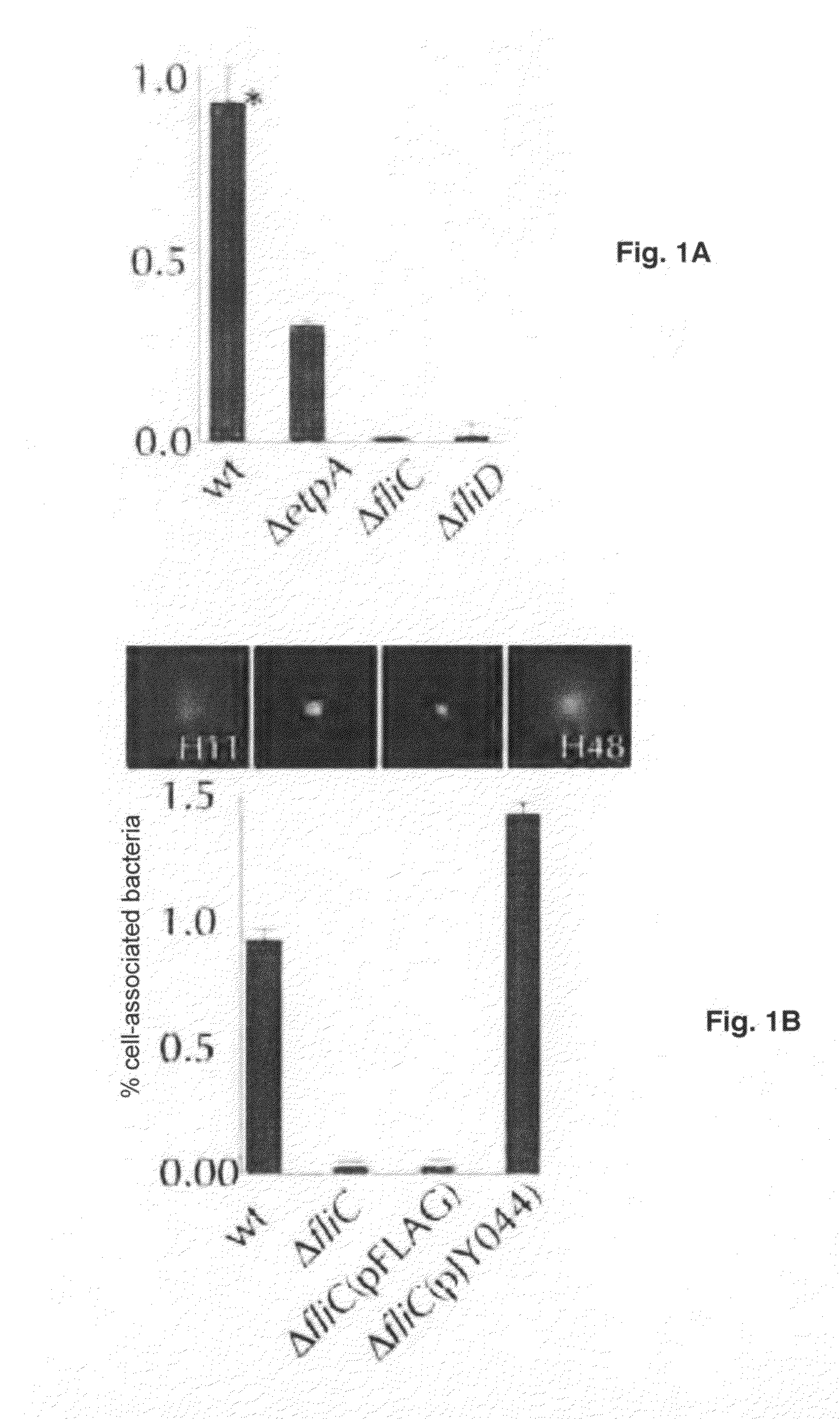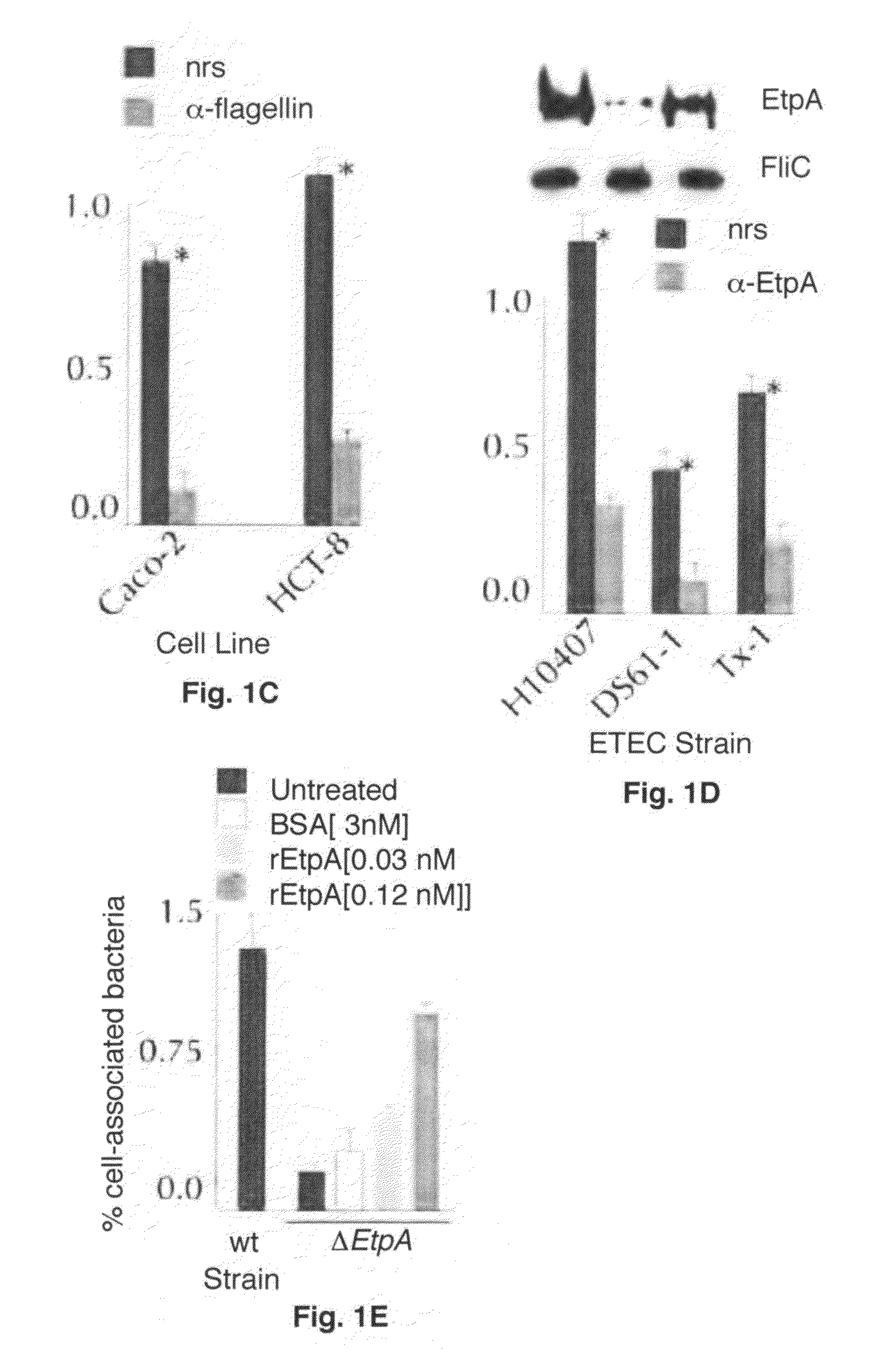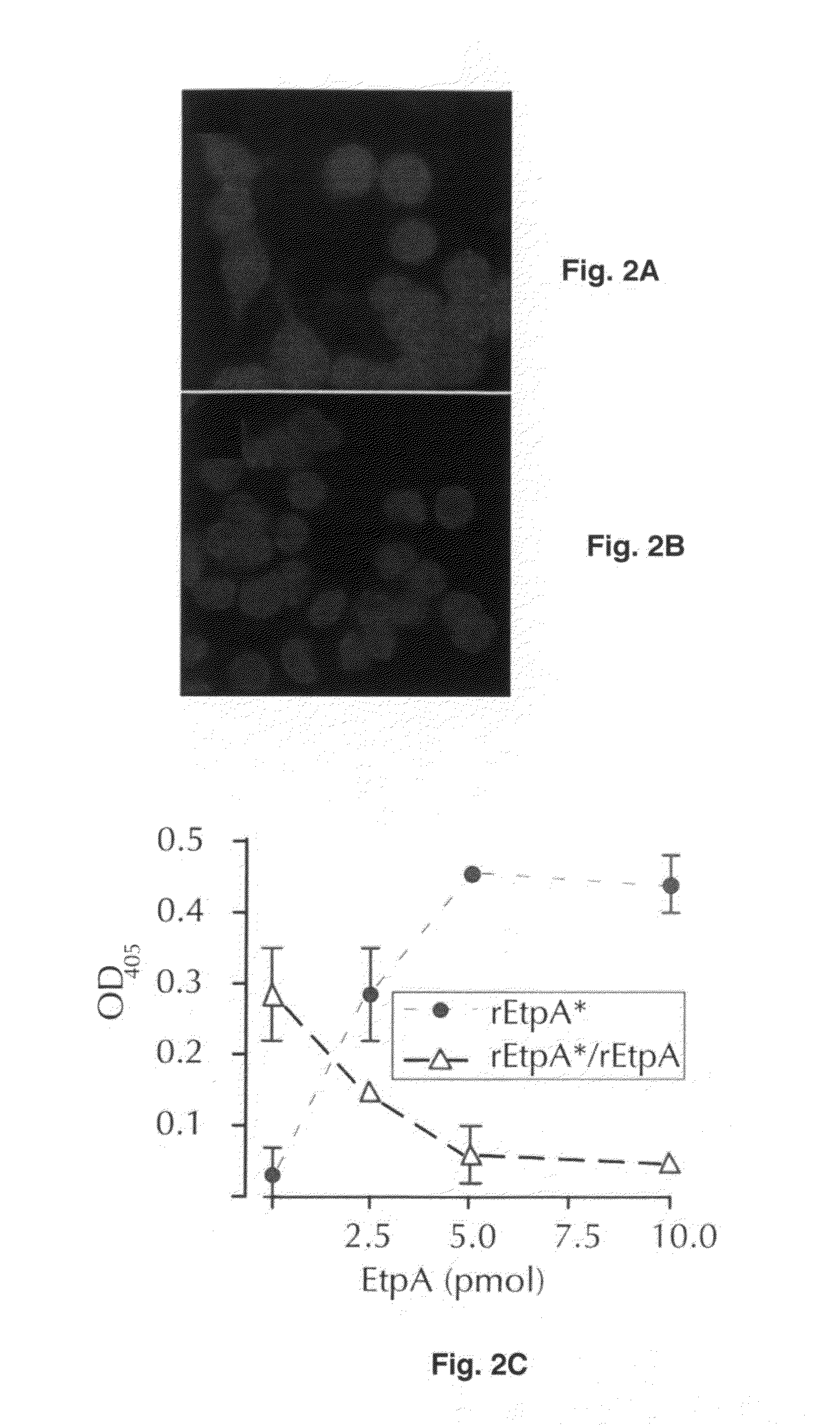Prevention and treatment of gram negative, flagellated bacterial infections
a flagellated bacterial and gram negative technology, applied in the field of microbiology, immunology and vaccine development, can solve the problems of gram negative and flagellated bacterial infections, toxins produced by enterotoxigenic bacteria, and hundreds of thousands of deaths, and achieve the effect of preventing diarrhea
- Summary
- Abstract
- Description
- Claims
- Application Information
AI Technical Summary
Benefits of technology
Problems solved by technology
Method used
Image
Examples
example 1
Bacterial Strains and Plasmids
[0059]A description of the bacterial strains and recombinant plasmids used in these experiments is given in Table 1.
[0060]
TABLE 1Bacterial strains and plasmidsStrain or Plasmidrelevant genotype or descriptionreference(s)StrainH10407ETEC serotype O78:H11; CFAI LT+ / ST+,Fleckenstein et al.,EtpA+2006; Evans andEvans, 1973Tx-1ETEC serotype O78:H12; CFAI, ST+, EtpA+Fleckenstein et al.,2006DS61-1ETEC serotype O6:H16; CFAII, LT / ST, EtpA+Fleckenstein et al.,2006DS220-4ETEC serotype O11:H33, CFAII, EtpA−Fleckenstein et al.,2006E. coli Top10F- mcrA φ(mrr-hsdRMS-mcrBC)Invitrogenφ80lacZφM15 φlacX74 recA1 araD139φ(araleu) 7697 galU galK rpsL (StrR) endA1nupGE. coli LMG194F- ΔlacX74 galE thi rpsL ΔphoA (Pvu II)InvitrogenΔara714 leu::Tn10 (TetR)jf1289isogenic etpA mutantFleckenstein et al.,2006jf1412fliC mutant; non-motile; KmRjf721fliD::NKBOR, KmR; non-motileDorsey et al.,2006MG1655descendent of prototype E. coli K-12 strain,Jacob-DubuissonOR:H48:K-et al., 2001jf1668e...
example 2
Adherence Assays
[0061]Bacteria grown overnight in Luria broth from stocks maintained at −80° C. were diluted (1:100) into fresh media and incubated at 37° C., 225 rpm to mid-logarithmic growth phase. Bacteria were then added to target epithelial cells at a multiplicity of infection (MOI) of approximately 10:1. After 1 hour incubation at 37° C., 5% CO2, nonadherent bacteria were removed by repeated washing with RPMI, and cell-associated organisms were recovered by lysis of the epithelial cells in 0.1% Triton-X-100 as described (Fleckenstein et al., 2006).
example 3
Construction of fliC Isogenic Deletion Mutant
[0062]To construct a deletion in fliC, a Kanamycin cassette was amplified from pKD4 using primers jf121905. 1(5′-GGAAACCCAATACGTAATCAACGACTTGCAATATAGGATAACGAATCGTGTAGGCT GGAGCTGCTTC-3′; SEQ ID NO: 1) and jf121905.2 (5′-TGCCAACACGGAGTTACCGGCCTGCTGGATGATCTGCGCTTTCGACATATGATATC CTCCTTA-3′; SEQ ID NO: 2), where underlined sequences represent upstream and downstream regions flanking fliC, respectively in the E. coli K-12 (MG1655) sequence (Blattner et al., 1997). This amplicon was then introduced into H10407(pKD46) as described (Fleckenstein et al., 2006; Datsenko and Wanner, 2000) to replace the fliC gene. Kanamycin-resistant colonies were then screened for motility on soft agar (1% tryptone, 0.7% NaCl, 0.35%. agar).
[0063]To complement the resulting strain, jf1412, a flagellin expression plasmid encoding fliC from MG1655 (serotype H48) was constructed. Briefly primers jf011706.1 (5′-AATAATAAGCTTATTGGCACAAGTCATTAATACC-3′; SEQ ID NO: 3) and jf0...
PUM
| Property | Measurement | Unit |
|---|---|---|
| concentration | aaaaa | aaaaa |
| volume | aaaaa | aaaaa |
| pH | aaaaa | aaaaa |
Abstract
Description
Claims
Application Information
 Login to View More
Login to View More - R&D
- Intellectual Property
- Life Sciences
- Materials
- Tech Scout
- Unparalleled Data Quality
- Higher Quality Content
- 60% Fewer Hallucinations
Browse by: Latest US Patents, China's latest patents, Technical Efficacy Thesaurus, Application Domain, Technology Topic, Popular Technical Reports.
© 2025 PatSnap. All rights reserved.Legal|Privacy policy|Modern Slavery Act Transparency Statement|Sitemap|About US| Contact US: help@patsnap.com



